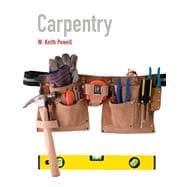NOTE: Before purchasing, check with your instructor to ensure you select the correct ISBN. Several versions of Pearson's MyLab & Mastering products exist for each title, and registrations are not transferable. To register for and use Pearson's MyLab & Mastering products, you may also need a Course ID, which your instructor will provide.
Used books, rentals, and purchases made outside of Pearson
If purchasing or renting from companies other than Pearson, the access codes for Pearson's MyLab & Mastering products may not be included, may be incorrect, or may be previously redeemed. Check with the seller before completing your purchase.
This inclusive text unites the key elements of residential construction, includes clear, concise, highly illustrated discussions and building plans, and excerpts from the 2015 International Residential Code for One- and Two-Family Dwellings from the International Code Council.
Written in simple terms with an emphasis on discipline nomenclature, professionalism, and articulation of content, Carpentry is among the first texts to integrate a full set of building plans with 2015 International Code Council building standards, and the latest carpentry text built around the ideals of modern and sustainable construction methods. Fully conceived, designed, and written to help develop the first generation of carpenters and builders of tomorrow’s highly efficient green homes, the book is based on building science and the latest materials and techniques. The mathematics, theory, practice, techniques, and applications of carpentry are interwoven within a larger discussion of sustainability, resource and labor efficiencies, indoor air quality, and environmental impact. The book develops building skills that go beyond technique by explaining purpose, code compliance, structure requirements, and introducing plan reading spatial skills.
0134074289 / 9780134074283 Carpentry Plus MyCarpentryLab with Pearson eText -- Access Card Package
Package consists of:
- 0132740648 / 9780132740647 MyCarpentryLab with Pearson eText -- Access Card -- for Fundamentals of Carpentry
- 0137004176 / 9780137004171 Carpentry








